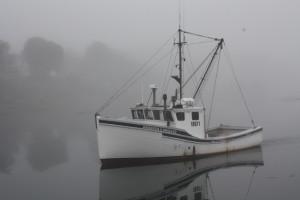
Lost fishing gear keeps on doing the job it was designed for long after its owners are gone.
Lacuna is like most other humpback whales in the Atlantic Ocean. He overwinters in warm Caribbean waters—where humpbacks breed and give birth—and heads north in spring, toward colder waters to feast on the abundance of krill, copepods, and other tiny marine life.
For nearly two decades, Lacuna, recognizable by the unique pattern of black and white marks on the underside of his tail fluke, has beaten the same watery path from the southern Atlantic to the Bay of Fundy in eastern Canada without incident, managing to avoid the dangers an animal his size might encounter. But last July when whale watchers spotted him in the bay, he was entangled in ropes—he had run afoul of fishing gear.
Although it was impossible to tell the origin of the gear Lacuna was hauling around, the whale’s plight highlighted a growing threat worldwide, abandoned or lost fishing gear that endangers marine life—ghost gear. Ghost gear does the job it was designed for: to catch marine animals. The problem is that it continues to catch fish, turtles, birds, and whales, for as long as the gear exists. Even worse, as animals die in lost traps or nets, they act as bait to attract other marine life and the cycle continues for years or even centuries.
Around 640,000 tonnes of fishing gear is lost or abandoned worldwide each year, accounting for around 10 percent of all marine litter. Ghost gear entangles and kills an estimated 136,000 whales, seals, and other marine mammals annually, and likely millions more animals with lower profiles: fish, crustaceans, turtles, and birds. Read more in Hakai.